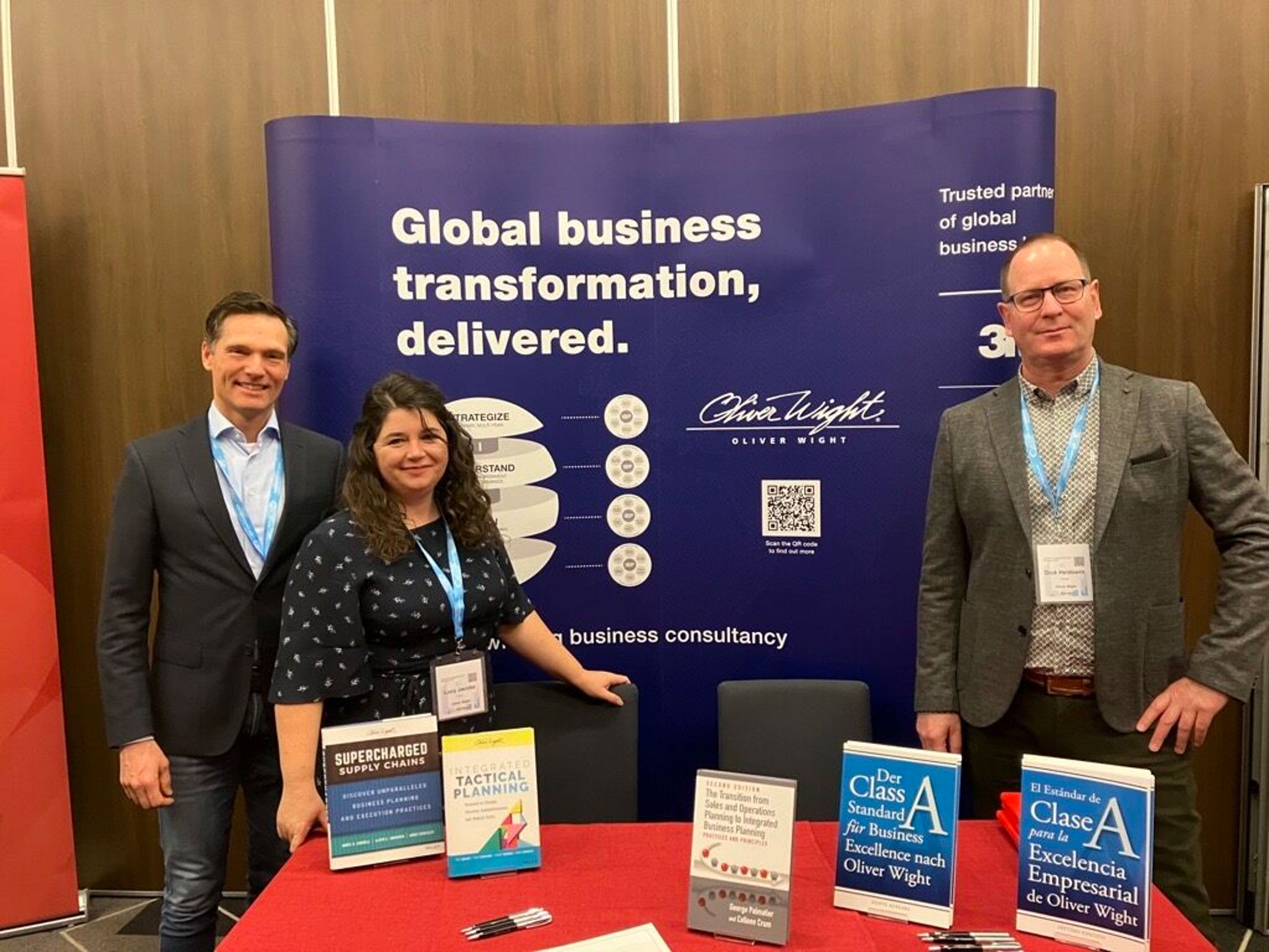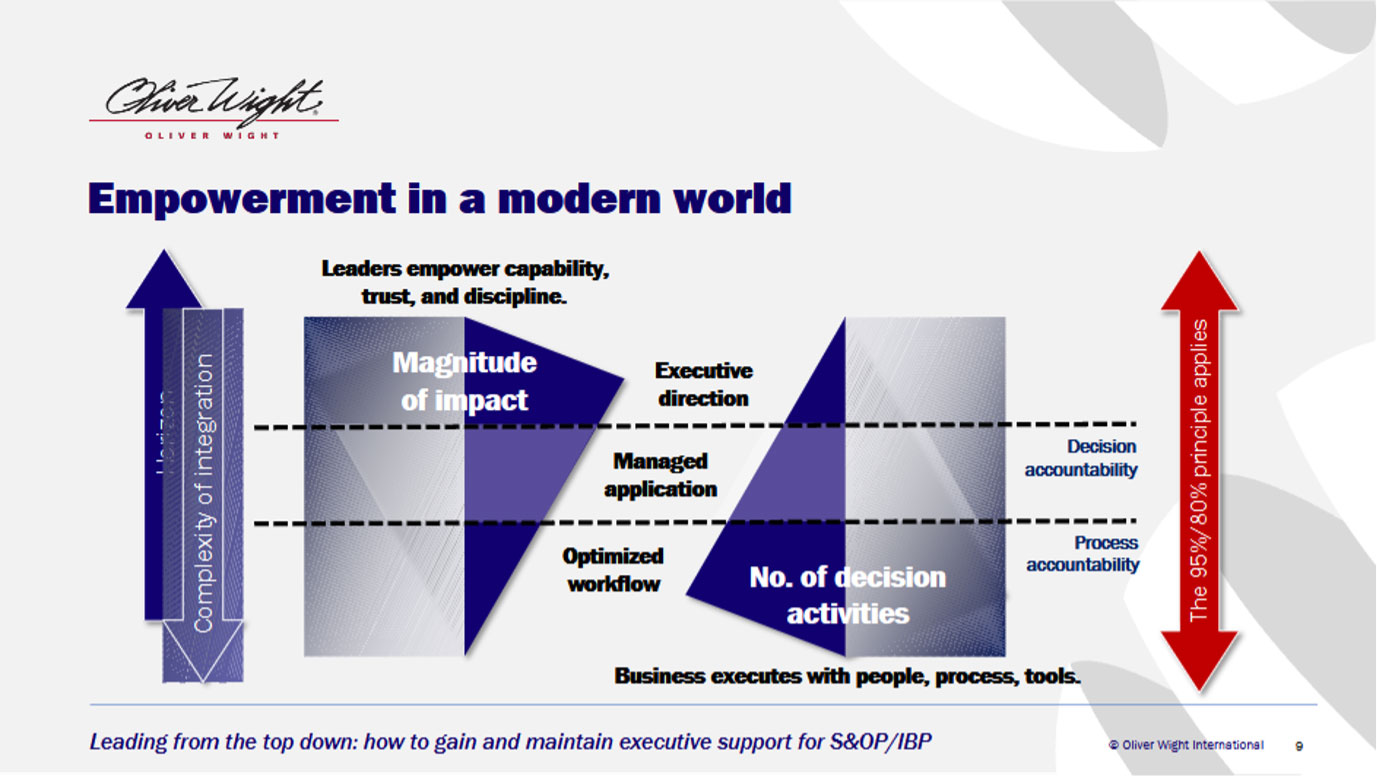Key learnings from the 8th Annual S&OP to Integrated Business Planning Summit
02 Jan 2024
Blog

In early December we attended the 8th S&OP to Integrated Business Planning (IBP) Summit in Amsterdam. With Oliver Wight being the originators of both S&OP and the further developed IBP, the Summit could not have been more relevant for us, and it was a great opportunity to meet and greet with existing clients and all other delegates.

The underlying theme of the S&OP to IBP Summits have always been the adoption and further development of Sales & Operations Planning. As Steven Hainey, the Summit Chair, noted the focus has shifted from “how do we get started?” to “how can we further improve the process and extract the most value out of it now that the majority of surveyed companies have well-established S&OP processes?”
A recurring theme with the increasing importance of S&OP is that the world is becoming increasingly morevolatile with what we once thought were “once-in-a-lifetime” events now happening in quick succession.
Having hardly recovered from the supply chain impacts of Evergreen blocking the Suez Canal, COVID, the Ukraine situation, and now the Gaza conflict is taking center stage. Using the adage “never waste a good crisis” has helped some companies to do things differently and get senior leadership support to embed S&OP or IBP.

How to gain and maintain senior leadership support was also the main topic of Oliver Wight Partner Lucy Jacob’s keynote speech at the start of Day 1. Culture and behavior remain the biggest hurdles to overcome, and leaders often don’t realize this starts at the top.
Change management efforts should aim at empowerment to decompress the organization. This allows senior leadership to focus on the longer term where impact of decisions is likely higher, with the medium and short-term horizons safely in the hands of other layers in the organization who are closer to the fire. The topic of senior leadership being active and providing visible support was mentioned in all speaker sessions on Day 1 and is a significant element when implementing an S&OP or IBP process.
Another main focus should be creating one set of numbers and having a clear and realistic assumptions-based and bottom-up view of where the organization is going, whilst understanding the gap to the strategic ambition. Providing leadership with alternatives on how to close gaps to strategy installs confidence in the overall process. We need to make sure that insights are not used to create top-down overrides of the plan as this reduces trust in the process.

More and more organizations are differentiating Sales & Operations Execution (S&OE) from Sales & Operations Planning (S&OP) to drive execution of the long-term plan. Speakers brought examples of implementing a weekly S&OE process next to the monthly S&OP process to provide a platform to resolve short-term issues to delivery of the plan and freeing-up the S&OP process to focus on the medium to longer term. This once again confirms that, in the end, plans are plans until they are being executed.

Of course, we cannot have a conference on creating a one number plan without discussing systems. Polls showed that the consensus is that a fool with a tool is still a fool. However, when people, process, and technology are successfully aligned in a joint implementation process organizations can reap the benefits. Board’s Head of Supply Chain, Dave Food shared his advice on how to make IBP the heartbeat of the business which included synchronizing goal achievement through technology.
If you don’t already know, Oliver Wight IBP Powered by Board is helping clients accelerate operational excellence, unlock consistent performance, and achieve faster growth. It combines Oliver Wight’s best practice consulting and education with Board’s Intelligent Planning Platform and is configured to fully align with a company’s unique requirements. You can find out more about it here.
One interesting outcome of the Summit is that artificial intelligence (AI) and machine learning (ML) are now being used by early adopters, especially in forecasting. Dr. Sven F. Crone from Lancaster University showed research on comparison of statistical methods with AI and ML methods. What was perhaps surprising to some is that AI/ML methods are often not as good as statistical methods in terms of forecast accuracy due to the sparse data inherent in monthly forecasting while requiring more computing power. It is important to note that statistics are only one input into the final demand plan. Assumptions and activities drive the numbers so we need to adjust the numbers where the future will be different than the past.
All in all, it was a very good Summit. It’s great to see increasing adoption of S&OP and S&OE practices. From our perspective, being the originators of S&OP and IBP, the observation is that organizations use the S&OP and IBP language interchangeably where there are significant differences. Of course, we would love to see more widely spread understanding of full Integrated Business Planning (IBP) and Integrated Tactical Planning (ITP). How to get that message across is a challenge for next years Summit.
If you’re looking to learn what best practice Integrated Business Planning looks like, check out our vast selection of resources including white papers, research, and books. Or test your IBP maturity using our free online self-assessment.